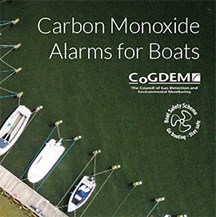Ventilation - why it is vital on a boat and how much do you need?
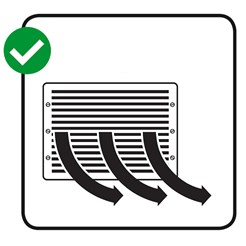 All carbon fuel burning appliances [LPG (gas), solid-fuel (coal and wood) and liquid (diesel/paraffin)] to burn safely and efficiently need a supply of fresh air.
All carbon fuel burning appliances [LPG (gas), solid-fuel (coal and wood) and liquid (diesel/paraffin)] to burn safely and efficiently need a supply of fresh air.
Inefficient or poor combustion through the lack of oxygen produces carbon monoxide (CO) gas. It has no smell or taste and can be fatal at levels of only 0.04% in the atmosphere and is sometimes called the silent killer. At high concentrations, carbon monoxide can be fatal to people and animals after only a few minutes exposure.
To provide enough oxygen for an efficient burn in appliances, air is piped, drawn or channelled directly to room-sealed/balanced-flued equipment directly from the outside.
However, un-flued (e.g. cookers/hobs), open flued (e.g. water heaters) and closed flued appliances (eg woodburner stoves) all use air from the surrounding space in which they are installed; so, the provision of adequate fixed ventilation in cabins and accommodation is extremely important for the safety of people and pets aboard the boat.
There are further reasons why adequate ventilation
• provides air for the safe combustion in fuel-burning appliances.
• helps to maintain a comfortable environment for occupants.
• dissipates heat generated by cookers and other fuel-burning appliances.
• reduces the amount of condensation generated by the appliances and occupants.
• allows extractor fans to clear unwanted odours and moisture.
Appliances installed in compartments may also require additional ventilation for cooling purposes.
While the appliances are burning available oxygen, the occupants also need air to breathe and this is factored into the overall ventilation requirement.
Ventilation design
The design of ventilation on a boat
• should allow outside air to pass through fixed openings to the craft interior.
• create a circulation of air, vents should be installed at low level and high level. This enables fuel-burning appliances to draw in cold air for combustion at low level and the products of combustion of un-flued appliances to be vented at high level.
• it should not pass through engine spaces.
• where ducting is used to distribute air from a ventilator, the cross-sectional area of the ducting must be constant along its whole length. The ducting must be sealed to prevent accumulation of condensation, securely fixed, and arranged so that the passage of air cannot be reduced by any liquids trapped inside.
• Unless installed on sea going craft, vents must not be closable.
• Vents should be located so that they cannot be covered by curtains, soft furnishings etc. which could restrict the air flow.
• Fly screens and architectural features can reduce air flow by up to 50% and their effect must be considered when calculating the ventilation requirements. Fly screens must be easily removable for cleaning.
• Vents should be configured and located to avoid the creation of uncomfortable draughts.
Calculating the boat’s ventilation
To check that enough fixed ventilation is installed, it is necessary to calculate the ventilation requirements for the whole craft including fuel burning appliances and occupants.
When the designer/gas engineer sizes vents, the following are considered:
• The maximum heat input (input rating) of all installed un-flued, open-flued, and closed-flued LPG and liquid fuelled appliances.
• The maximum heat output of all installed solid-fuel appliances.
• The maximum number persons the craft is designed to carry.
The effective area of fixed ventilation for accommodation spaces containing a fuel-burning appliance, V, in square millimetres, should be calculated from the following formula:
V = 2200U + 650P + 440F + 550H where:
U is the input rating of unflued appliances, in kilowatts (kW);
P is the number of persons for which the accommodation space is designed;
F is the input rating for all open (and closed) flued appliances, in kilowatts (kW);
H is the nominal output rating of solid fuel appliances, in kilowatts (kW), (as defined in British Standard 8511 Code Of Practice for installing solid fuel appliances in boats).
This formula applies to any accommodation space in the craft containing un-flued, open-flued, and/or closed-flued appliances.
If the craft is CE marked, the term ‘P’ relates to the number of persons stated on the Builder’s plate, or as recorded on the craft’s Declaration of Conformity which may be found in the boat’s Owner’s manual.
The input rating of appliances can be found on the maker’s data plate.
Ventilation in the form of permanent and measurable gaps around doors and windows can be considered when measuring the ventilation provision.
Ventilation should be supplied by at least two equally sized fixed openings in the accommodation space, with one opening installed as high as practicable and one installed as low as practicable. Both openings should be either positioned or shielded such that they cannot be inadvertently obstructed.
The total fixed ventilation requirement should be divided roughly in half:
High-level (e.g. roof, top of doors etc) ventilation = 50% of the total
Low-level (e.g. bottom of doors, bulkheads etc) ventilation = 50% of the total
Ventilators on inland boats should always be fixed open and cutaways behind ventilator units and plates should be complete
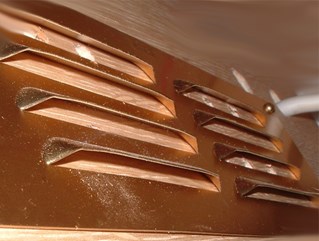
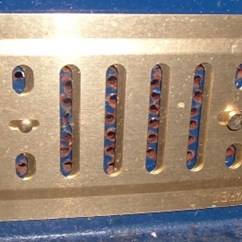
Always keep your eye on the ventilation. Crushed cowls, stuck diverters, lodged leaves and dust encrusted spider webs can all block ventilation.
Never allow ventilators or vent routes to get blocked or covered by curtains, furniture, boxes or stowed clothing/bedding.
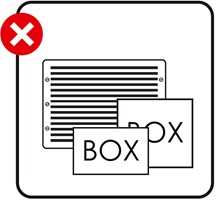
As a belt and braces defence, and protection from outside sources of CO, always have a working CO alarm suitable for boats - see the CO alarm information on this website.

